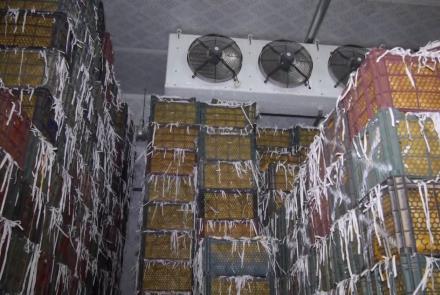
14 Cold Storage Facilities To Be Activated In Afghanistan To Support Agriculture
The ministry revealed this in a statement on Friday, January 3, stating that a meeting was held to discuss the activation of these unfinished cold storage facilities in 12 provinces.
According to the statement, the meeting focused on the completion and activation of the 14 cold storage facilities, available resources, and strategies for better utilization of these facilities. However, the ministry did not provide specific details regarding which provinces the cold storage units will be operational in.
Experts believe that establishing cold storage facilities in the provinces where agriculture and horticulture are the primary livelihoods of the population will have a significant impact on economic growth and agricultural development. In other areas, where agricultural products are mainly imported, the construction of cold storage facilities could increase imports by allowing more products to be stored and sold over a longer period of time. Additionally, the creation of cold storage facilities can generate new job opportunities and stimulate investments.
However, the lack of proper storage mechanisms like cold storage facilities and the absence of attention to this critical aspect have led to fluctuating prices for agricultural products in the country, with no stable pricing system in place. This instability in pricing often results in significant losses for farmers, who are unable to sell their produce at a fair price due to spoilage or lack of proper storage, further exacerbating the struggles of the agricultural sector.
In light of these challenges, it is essential for the authorities and private sector to focus on improving the storage infrastructure to support the agricultural economy. The development of cold storage units could play a pivotal role in reducing post-harvest losses, stabilizing prices, and ultimately improving the livelihoods of farmers, who are among the most vulnerable populations in the country.
ShareFacebook Twitter WhatsApp Email Print Telegram
Legal Disclaimer:
MENAFN provides the
information “as is” without warranty of any kind. We do not accept
any responsibility or liability for the accuracy, content, images,
videos, licenses, completeness, legality, or reliability of the information
contained in this article. If you have any complaints or copyright
issues related to this article, kindly contact the provider above.
















Comments
No comment